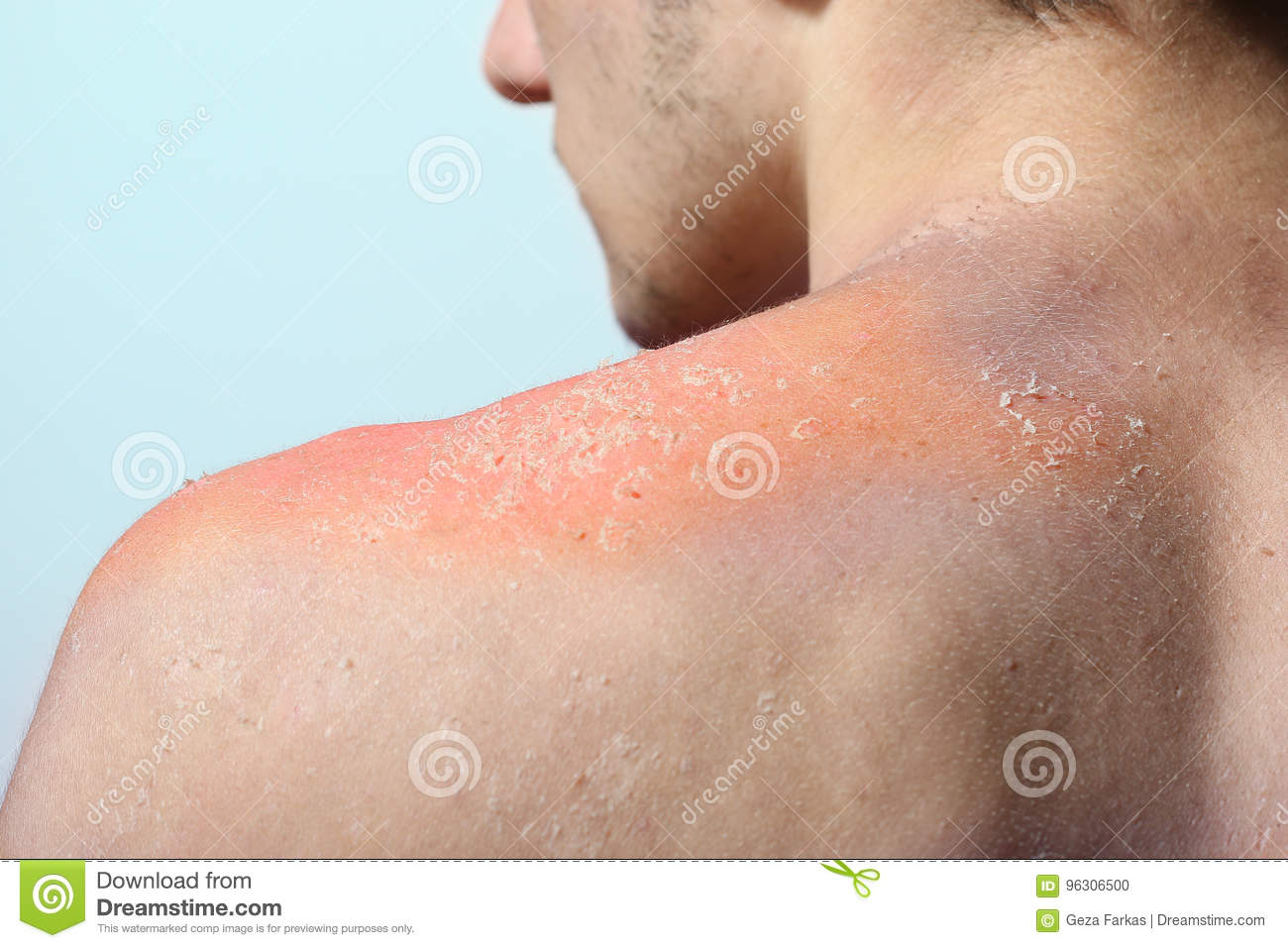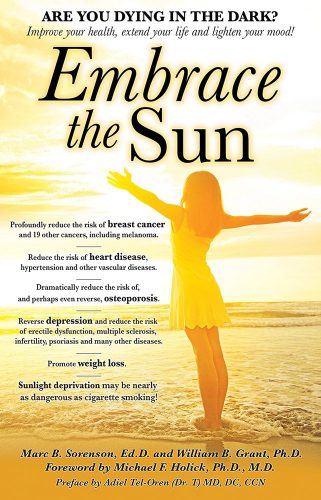Sunscreen chemicals strike again. This time it is breast cancer. By Marc Sorenson, EdD.
Sunscreen chemicals may be some of our most debilitating environmental poisons.
Due to the worries regarding potentially deadly sunscreen chemicals, researchers are beginning to reassess the wisdom of using them.
Oxybenzone is one of the most widely used sunscreen chemicals and probably the most dangerous. Thus, we will present a few facts about the effects of Oxybenzone:
- First of all, research more than two decades old shows Oxybenzone is absorbed systemically after skin application. That evidence continues to accumulate, yet not all researchers agree that high systemic absorption of noxious chemicals is dangerous.
- Oxybenzone and other sunscreen chemicals are endocrine disruptors. Hence, they may have deleterious effects on the breast, prostate and other endocrine glands.
- These chemicals increase the production of deadly free radicals in the skin. Free radicals are associated with tissue and DNA damage and thought to be precursors to cancer.
- Sunscreen chemicals are agonists, which are substances capable of eliciting a response in hormonally regulated processes. Mammary gland development and cancer initiation are examples of responses to agonists.
- Sunscreen chemicals may lead to sunburns.

- These chemicals harm coral reefs.
- Since 1935, outdoor work has decreased profoundly (about 90%). In addition, sunscreen use has increased profoundly, and melanoma incidence has increased by about 3,000%. Seems like there is a disconnect here, no? [Read my book, Embrace the Sun, for the analysis.]
The latest, most noteworthy and alarming research on sunscreens.
Sunscreen chemicals, according to the propaganda, should prevent melanoma yet paradoxically, they do not. In addition, they should stop sunburns, yet, they do not. Another dilemma for sunscreen promoters is evidence that sunscreen toxicity is more than skin deep. Could sunscreen chemicals also promote initiation and growth of breast cancer? Endocrine-disrupting chemicals like oxybenzone and others are agonists for hormone sensitive cancers such as breast cancer. Consequently, researchers performed enlightening research to determine the relationship between breast cancer and oxybenzone. The investigation measured urine concentrations of oxybenzone in rodents on high-fat or low-fat diets exposed to that chemical.
The connection of oxybenzone and breast cancer
Results: “Benzophenone-3 exposure to mice [on high-fat diets] yielded urine levels similar to humans subjected to heavy topical sunscreen exposure.” The high-fat diet with oxybenzone promoted increased tumor cell proliferation, decreased tumor cell apoptosis [cancer-cell death], and increased tumor vascularity. In other words, it promoted growth and development of breast cancer.
The animals on a lifetime low-fat diet appeared to receive some protection with oxybenzone. Nevertheless, the researchers made the following statement: “Although benzophenone-3 [oxybenzone] seemed protective on low-fat diet, spindle cell tumors arising in these mice showed increased proliferation growth and decreased apoptosis.” My opinion is that this would predict increased potential for breast cancer and other cancers in the future.
Nearly all humans in this day are consuming high-fat diets. For those who are consuming low-fat diets, it would still be wise to avoid sunscreens.
For more information on sunlight and health, visit sunlightinstitute.org and read the book, Embrace the Sun.
Be sure to get your share of safe, non-burning sun exposure.
HAPPY SUNNING!
Poisons in the blood: Chemical Sunscreens.
Poisons in the blood. By Marc Sorenson, EdD.
Poisons are something we want to avoid and reverse. Am I correct in that assumption? Yet, some scientists believe that if sunscreens are poisons, humans should continue using them until they do more research. So, suppose that people die, or develop a disease as that research takes place. Maybe then, we change our minds and say, “it seems like we made a mistake.”
We seem to be a group of guinea pigs
Sunscreen researchers seem to conclude that they need to do more investigations on blood absorption of sunscreen poisons. They would do this research while the guinea pigs (we the people) still use the poisons.
Naming and calling out the poisons
These researchers studied six different sunscreen chemicals and measured their absorption and retention in the blood. These chemicals were avobenzone, oxybenzone, octocrylene, homosalate, octisalate and octinoxate. The subjects applied the sunscreens (with all of these chemicals) to 75% of the skin. The investigators then measured residual chemical concentrations at varying periods up to 21 days. Thus, they found all chemicals produced blood concentrations that were well above the Food and Drug (FDA) safety thresholds. In one case (oxybenzone), the concentration reached 360-times the FDA threshold level for safety in four days. In addition, all six chemical concentrations were significantly above the FDA threshold after only one application.
So should we use poisons that have concentrations 3,600% above the FDA threshold?
So what did these great scientists conclude? Here is their statement: “In the absence of clear data demonstrating harm, the use of chemical sunscreen may still be considered appropriate [Really?]. The use of mineral-based sunscreen is a well-established safe alternative. Elevating the science of the benefits and harms of sunscreen should be a priority. The sunscreen industry must begin conducting these safety studies as recommended by the FDA. Until then, the harms of absorption of sunscreen filters will remain uncertain.” I vehemently disagree; the harms of these toxic chemicals are well-known, and I personally do not want to absorb anything into my blood that exceeds the FDA safety thresholds by 3,600%. Chemicals that produce that excess are obviously poisons.
Are sunscreen chemicals either harmful or worthless?
The authors also indicate that sunscreens stop the development of skin cancer. Perhaps they have not read the research that indicates the direct opposite. For example, a meta-analysis published in the European Journal of Dermatology showed that there was no association between sunscreen use and skin cancer, including melanoma. Another study showed that those who used sunscreens had a far greater risk of sunburns than those who used other methods. Those other methods were seeking shade, wearing a hat or visor, and wearing long sleeves and pants. Another interesting fact is that those who used sunscreens had a 62% risk of sunburn. Those who did not use them but engaged in the aforementioned protective behaviors had a 24% risk.
What makes the term “poisons,” appropriate?
While these “researchers” are determining the sunscreen safety, and deciding if they are poisons, let us consider the research. Studies confirm that sunscreen chemicals are highly absorbed and then detected in urine and breast milk. This may cause systemic effects, including disruption of the endocrine system. In addition, pregnant mothers exposed to oxybenzone give birth to babies with low birth weights. This “programs” the developing child for greater risks of heart disease, hypertension, type-two diabetes and other diseases in adulthood. Furthermore, sun causes oxybenzone to become a potent allergen and to form free radicals. In fact, after one hour, more free radicals were created by sunlight contacting sunscreen, than sunlight on skin.” This is another indication that sunscreen use causes more damage than no sunscreens at all!
Gender-bending properties of sunscreen chemicals
Sunscreen chemicals also have potential “gender-bending” characteristics. They increase estrogen and decrease testosterone in men. In addition, they may be responsible for the nearly 50% reduction of sperm count in the last few decades. Sunscreen chemicals may cause the feminization of fish. in addition, environmental pollution by these and similarly structured chemicals may cause feminization in alligators and the gradual extinction of Florida panthers due to failure to breed. Sunscreens also increase the absorption of pesticides through the skin,
In conclusion, what are the environmental damages of sunscreen poisons?
Finally, the environmental damage may be substantial. Many beach areas have prohibited the use of sunscreen poisons due to concerns about coral-reef destruction.
So be careful when you next see a sunscreen advertisement. Protect yourself with clothing and shade when you feel that your sun exposure may become excessive. Sunscreen is not the answer. Regular, non-burning sun exposure is the answer.
Happy sunning.
Read more in our book, Embrace the Sun.
By Marc Sorenson, EdD Sunlight Institute… Sunscreen dangers..
Sperm count in men has dropped by more than half since 1950, possibly due to powerful chemicals that are finding their way into the water supply.[1] Now, the sperm that are still viable may have another problem, according to recent research: sunscreen chemicals are absorbed into the blood and carried into the sperm, which can render the sperm infertile.[2] [3] One investigation showed that an incredible 9% or more of the applied amount is absorbed through the skin.[4] Sunscreen chemicals also have potential “gender-bending” characteristics; they increase estrogen and decrease testosterone in men,[5] [6] and are also known to cause the feminization of fish. [7]And environmental pollution by these and similarly-structured chemicals are now thought to cause feminization in alligators and the gradual extinction of Florida panthers due to failure to breed.[8] Sunscreens also increase the absorption of pesticides through the skin. [9] [10] There are many more sunscreen dangers, but time and space will not permit us to discuss them all.
How does the system work to cause infertility? Many of the chemicals that filter out UV radiation can induce calcium signals in human sperm cells and mimic the effect of progesterone. This can render the sperm infertile. The aforementioned study that showed the influence of sunscreen chemicals was a lab study or “in vitro” investigation, using collected human sperm. It is not known if the same would happen in living human subjects, but it is likely.
These chemicals are known as endocrine disruptors, and with sperm count going down and many cancers increasing, they are not something I would recommend for public consumption.
Nature intends for us to cover up or seek the shade when we have had enough sun exposure. Nature also intends that we seek the sun to reap the benefit of it marvelous healthful benefits. Soak up the sun, but be sure not to burn. And don’t’ use sunscreens. There are too many sunscreen dangers, and they stop vitamin D production on the skin they cover.
[1] https://www.lifesitenews.com/news/study-finds-male-sperm-count-falling-dramatically-due-to-pollutants-in-wate.
[2] http://www.cnn.com/2016/04/14/health/sunscreen-sperm-male-fertility/index.html
[3] Rehfeld A, Dissing S, Skakkebæk NE
[4] Hayden CG, Roberts MS, Benson HA. Systemic absorption of sunscreen after topical application. Lancet 1997:350:863-64.
[5] Environmental Working Group: Americans Carry Body Burden of Toxic Sunscreen Chemical. March 25, 2008. (available at http://www.ewg.org/node/26212).
[6] Ma R, Cotton B, Lichtensteiger W, Schlumpf M. UV Filters with Antagonistic Action at Androgen Receptors in the MDA-kb2 Cell Transcriptional-Activation Assay. Toxicological Sciences 2003;74:43-50.
[7] Kunz PY, Galicia HF, Fent K. Comparison of in vitro and in vivo estrogenic activity of UV filters in fish. Toxicol Sci 2006:90:349-61.
[8] Pickart, L. The Chemical Sunscreen Health Disaster. 2000-2008. (available at http://www.skinbiology.com/toxicsunscreens.html)
[9] Brand RM, Pike J, Wilson RM, Charron AR. Sunscreens containing physical UV blockers can increase transdermal absorption of pesticides. Toxicol Ind Health. 2003;19:9-16
[10] Pont AR, Charron AR, Brand RM. Active ingredients in sunscreens act as topical penetration enhancers for the herbicide 2,4 dichlorophenoxyacetic acid. Toxicol Appl Pharmacol. 2004;195:348-54.


